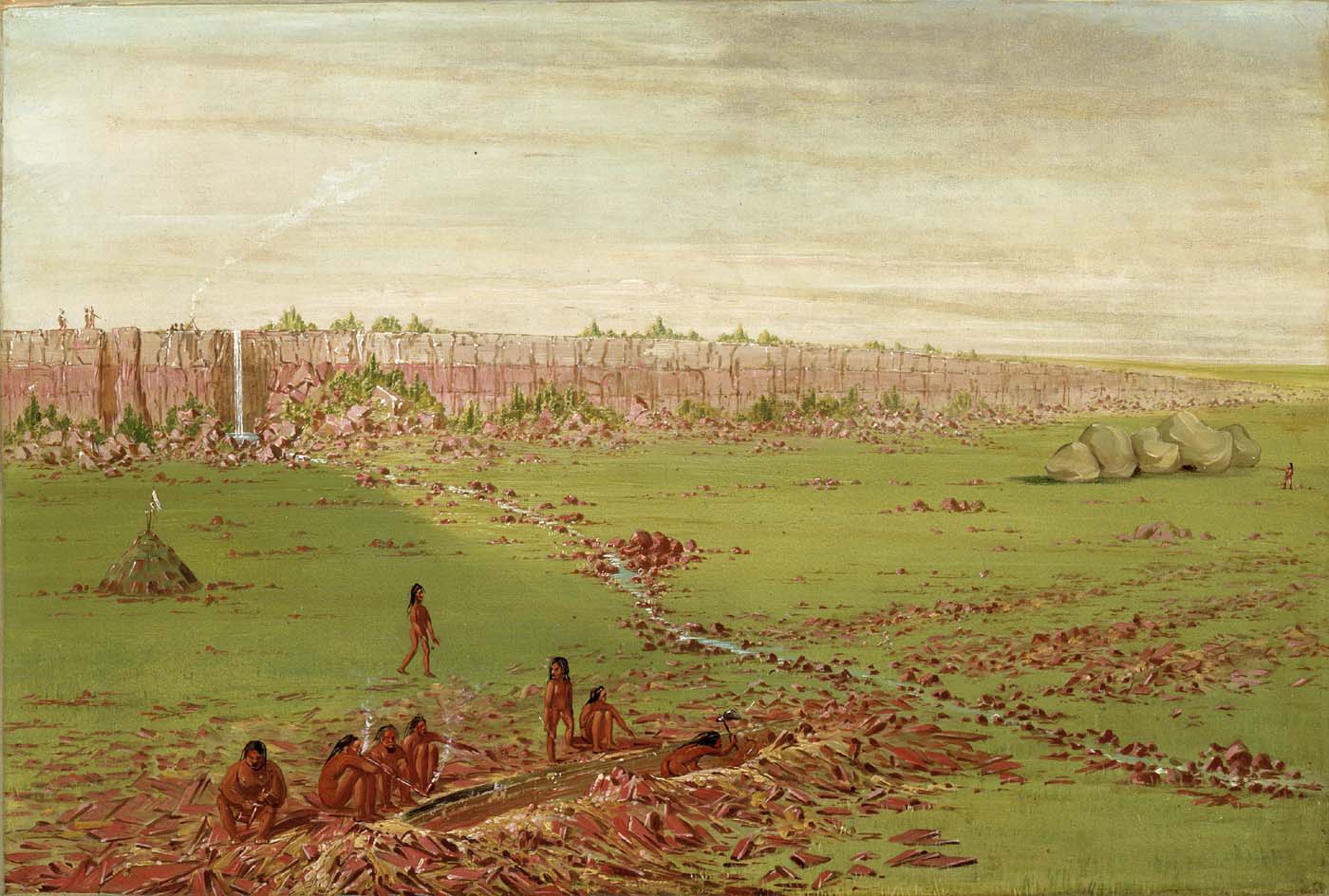Pipestone Quarry on the Coteau des Prairies

George Catlin made this sketch in 1836, when he made his well-documented journey to the Pipestone Quarry in today’s Minnesota, where Plains Indians harvested the red steatite to make their pipe bowls. He was not the first white man to visit the sacred quarry, but he was the first to record its appearance. He wrote of the journey and the site: “For many miles we had the Coteau in view in the distance before us, which looked like a blue cloud settling down in the horizon . . . On the very top of this mound or ridge, we found the far-famed quarry or fountain of the Red Pipe, which is truly an anomaly in nature. The principal and most striking feature of this place, is a perpendicular wall of close-grained, compact quartz, of twenty-five and thirty feet in elevation, running nearly North and South with its face to the West, exhibiting a front of nearly two miles in length, when it disappears at both ends by running under the prairie . . . At the base of this wall there is a level prairie, of half a mile in width, running parallel to it; in any and all parts of which, the Indians procure the red stone for their pipes, by digging through the soil and several slaty layers of the red stone, to the depth of four or five feet. From the very numerous marks of ancient and modern diggings or excavations, it would appear that this place has been for many centuries resorted to for the red stone; and from the great number of graves and remains of ancient fortifications in its vicinity, it would seem, as well as from their actual traditions, that the Indian tribes have long held this place in high superstitious estimation; and also that it has been the resort of different tribes, who have made their regular pilgrimages here to renew their pipes.” (Truettner, The Natural Man Observed, 1979; Gurney and Heyman, eds., George Catlin and His Indian Gallery, 2002
- 624
- Other objects by this creator in this institution
- 312
- Objects by this creator in other institutions